This is the final week to catch Jennifer Rose Sciarrino’s rousing solo exhibition Thrummer at Daniel Faria Gallery. Sciarrino’s most recent body of work combines digital animation, floor drawing, and hand-blown glass sculpture to examine the dynamic between technology and the material world. Microscopic aspects of plant and human biological matter—muscle tissue, pollen grain, and the gut—are magnified so as to make them more conceivable, tangible. What results is an encompassing experience wherein the viewer is invited to explore, high and low, the emblematic internal structure of living forms.
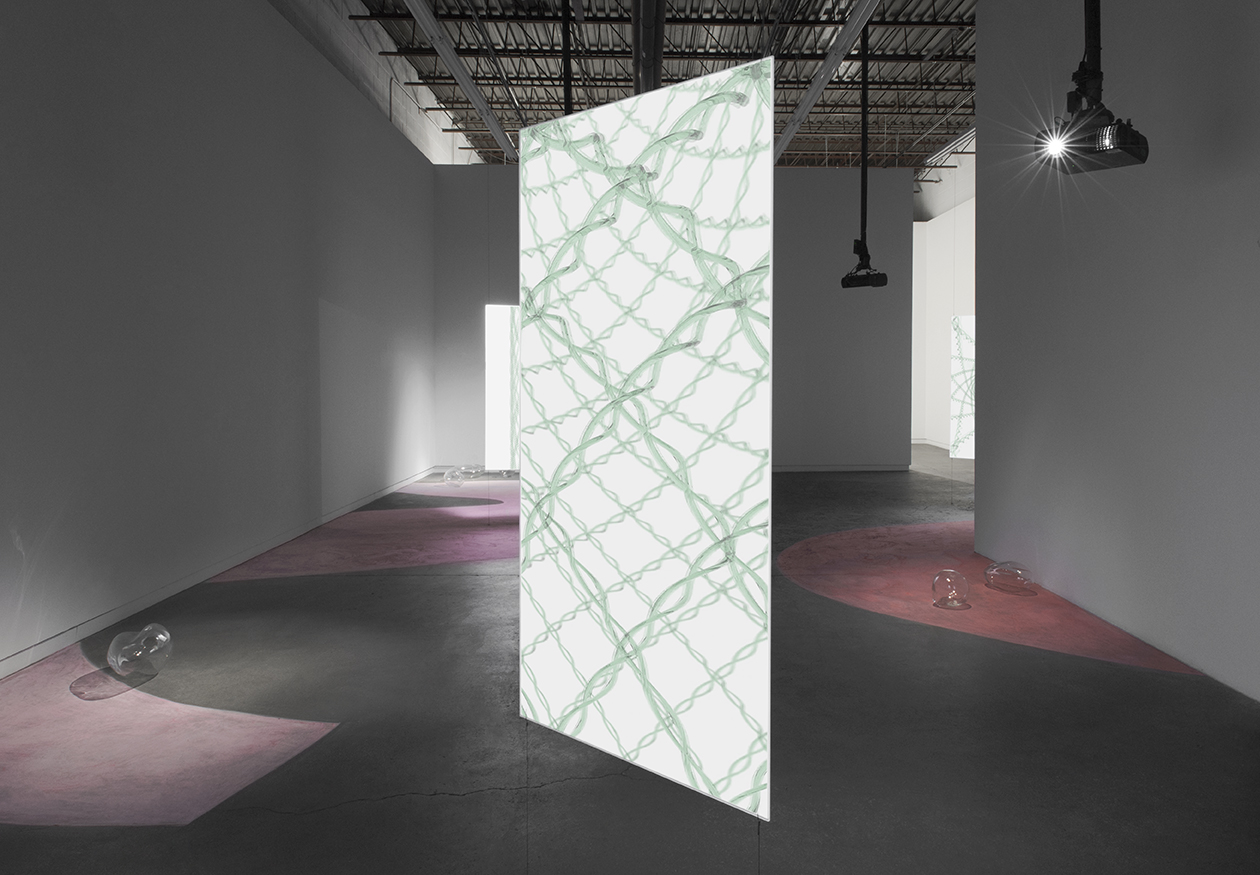 Jennifer Rose Sciarrino, Thrummer, 2016, installation view at Daniel Faria Gallery. Courtesy of Daniel Faria Gallery
Jennifer Rose Sciarrino, Thrummer, 2016, installation view at Daniel Faria Gallery. Courtesy of Daniel Faria Gallery
The three channel video installation, Muscle Memory, suspends from the ceiling. In this work, Sciarrino digitally renders spun nylon fishing wire to create organic patterns that expand and contract. Over the course of the hypnotic loop, the animation speed alternates between rapid and slow, dictated by a recording of Sciarrino’s variously paced inhales and exhales. As the title suggests, the work references microscopic views of muscle tissue. In this way, the expanding and contracting motions in the animation refer to muscle memory, that is, the muscle’s ability to recall and assume a given action as a result of habit. This thoughtful work encourages the viewer to take note of their own breathing patterns and muscular actions, connecting the virtual movements on screen to the felt sensations within the body.
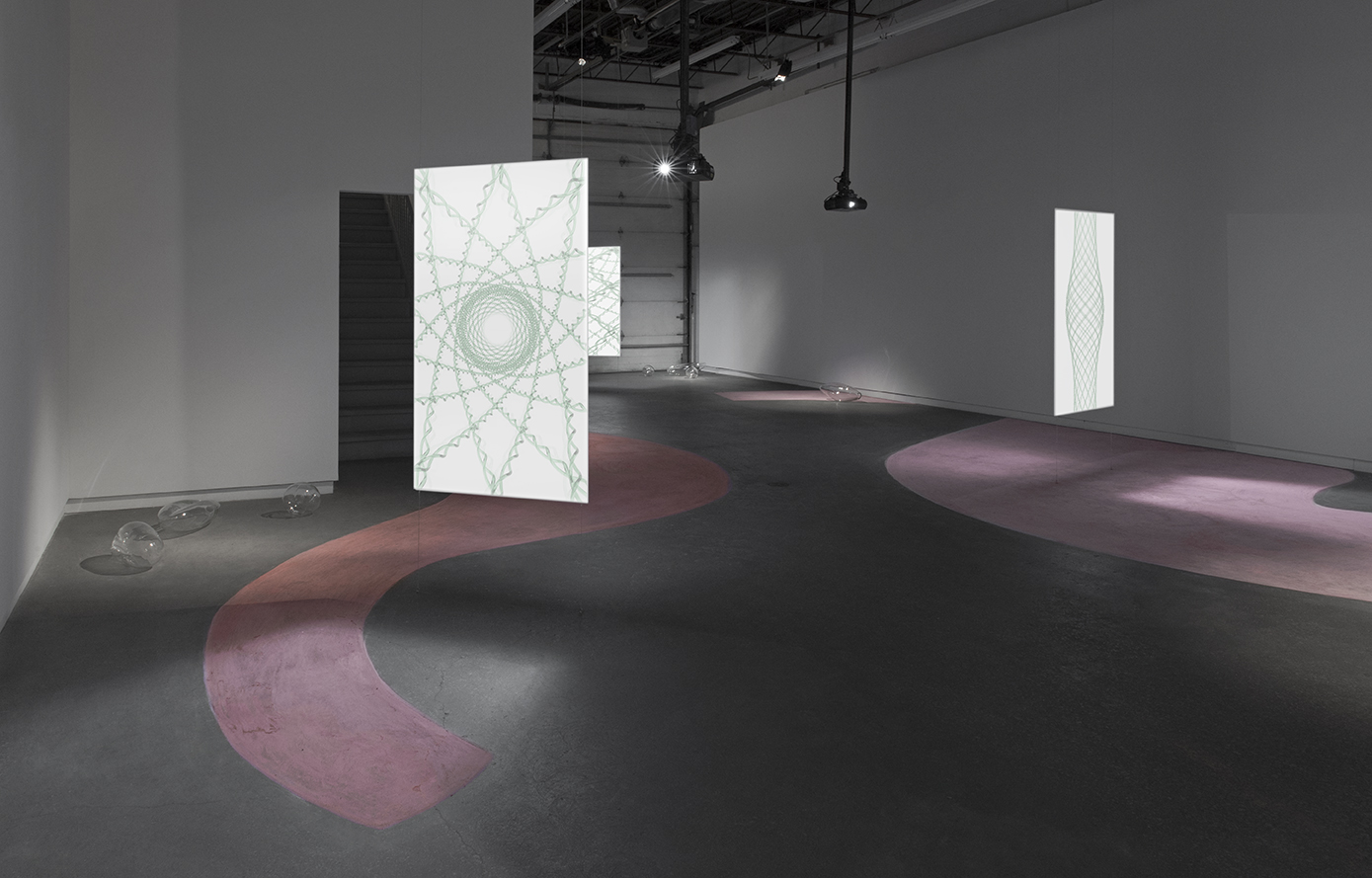 Jennifer Rose Sciarrino, Thrummer, 2016, installation view at Daniel Faria Gallery. Courtesy of Daniel Faria Gallery
Jennifer Rose Sciarrino, Thrummer, 2016, installation view at Daniel Faria Gallery. Courtesy of Daniel Faria Gallery
Large scale floor drawings in pink chalk establish a curvilinear pathway through the space. These drawings come to represent the human gut. The artist cites an interest in the effects that the health status of micro-organisms lining the gut have on emotional states. Put plainly, if the microbiota are disrupted, a shift in mood—be it anxiety or joy—results. Photographs of the works upon completion demonstrate they were rendered with pristine uniformity. However, some weeks into the exhibition, shoe scuffs have caused the perimeters of the drawings to wear or disappear altogether. This progression can be read as a shift overtime from good to poor gut health. In turn, there is a presumed shift in emotional state. As the drawings deteriorate so do the attached sentiments of harmony and composure. It is the collective effort of visitors to the exhibition to maintain these sentiments, or not.
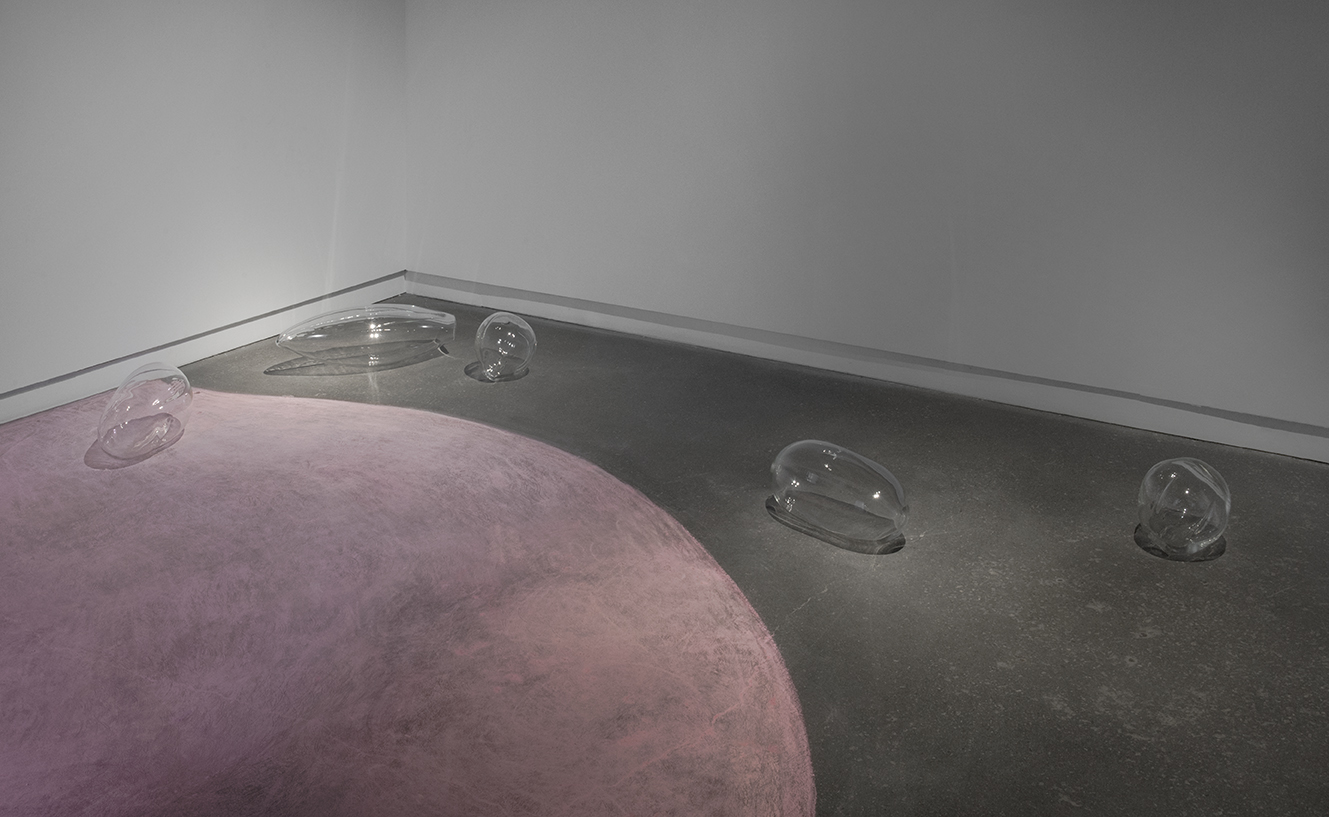 Jennifer Rose Sciarrino, Thrummer, 2016, installation view at Daniel Faria Gallery. Courtesy of Daniel Faria Gallery
Jennifer Rose Sciarrino, Thrummer, 2016, installation view at Daniel Faria Gallery. Courtesy of Daniel Faria Gallery
Nestled throughout the gallery’s nooks is Sciarrino’s Pollen series composed of hand-blown glass sculptures. Modeled after microscopic views of pollen grains, these works are concerned with the micro-organism’s function which is to harbour reproductive information and, with the help of insects or wind, transfer that information to a nearby plant in an effort to provoke flowering. Sciarrino’s sculptures assume irregular rounded shapes and appear delicate and weightless upon the gallery floor. It is as if one gust of wind from the gallery door could send any number of them into flight.
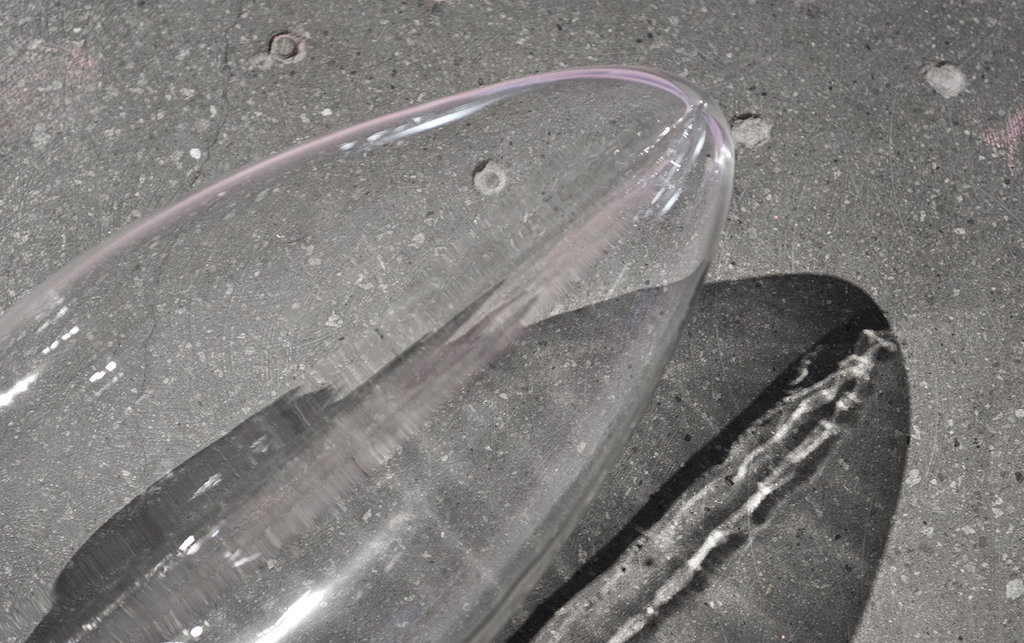 Jennifer Rose Sciarrino, Thrummer, 2016, installation view at Daniel Faria Gallery. Courtesy of Daniel Faria Gallery
Jennifer Rose Sciarrino, Thrummer, 2016, installation view at Daniel Faria Gallery. Courtesy of Daniel Faria Gallery
As viewers pass through the space, a gentle whirring is audible but its source is ambiguous. The sound calls to mind technological processes which do not seem to fit the very organic subject matter of the exhibition’s other works. In the adjacent gallery space, Sciarrino’s wall installation, Budding, concludes the show in the form of sporadically arranged computer fans covered in modelling compound. The title suggests that perhaps there is a link between this work and the Pollen series, that is, Budding shows the function of plants after being pollinated.
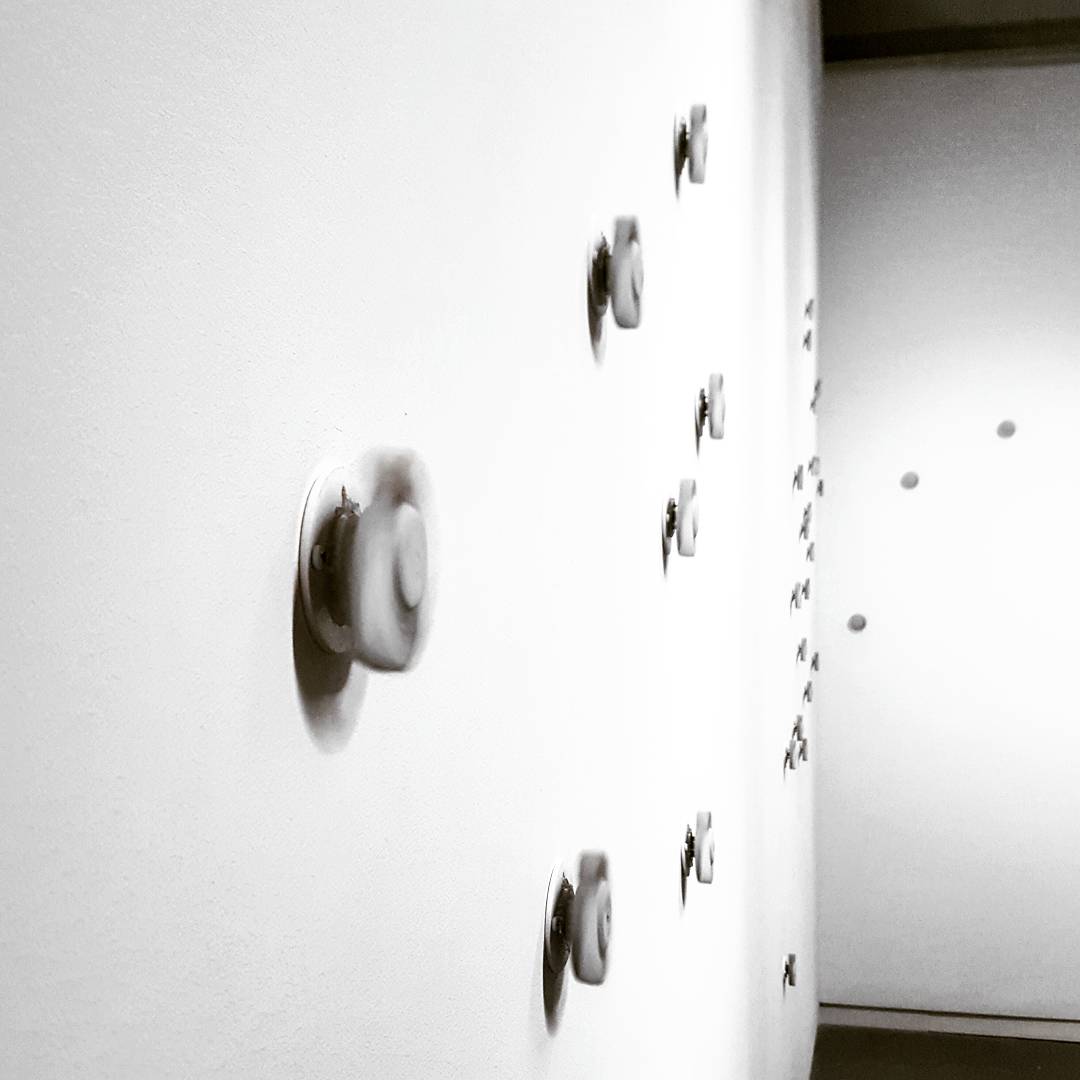 Jennifer Rose Sciarrino, Thrummer, 2016, installation view at Daniel Faria Gallery. Photo: Vanessa Zeoli
Jennifer Rose Sciarrino, Thrummer, 2016, installation view at Daniel Faria Gallery. Photo: Vanessa Zeoli
The amalgamation of biological theme and technological media in Sciarrino’s body of work speaks to humanity’s urge to improve upon the natural by unnatural means. This exhibition playfully inspires a serious contemplation on the not-so-fictional future of science.
Vanessa Zeoli
*Exhibition information: November 17, 2016 – January 14, 2017, Daniel Faria Gallery, June 9 – July 23, 2016, 188 St. Helen’s Avenue, Toronto. Gallery Hours: Tue – Fri, 11 – 6; Sat, 10 – 6 pm.
